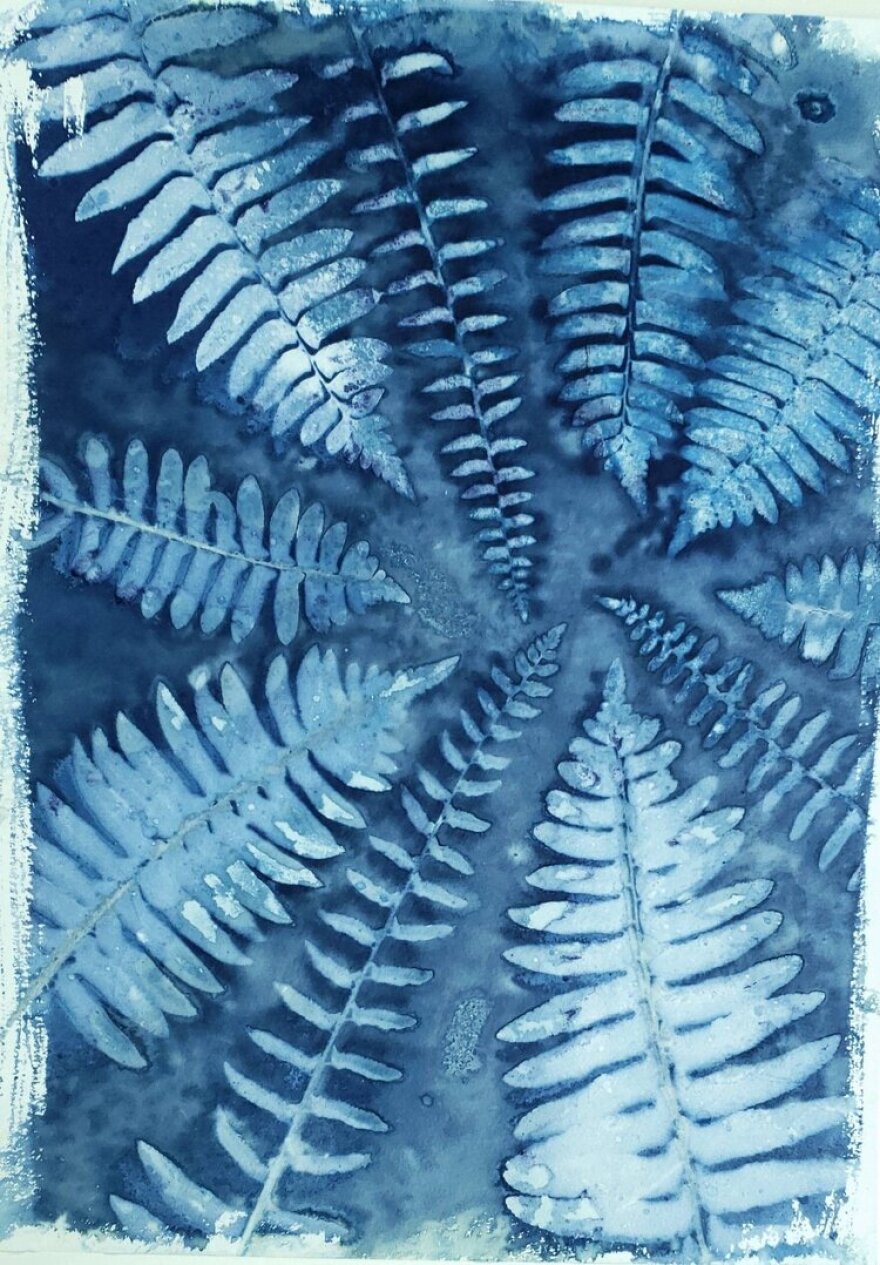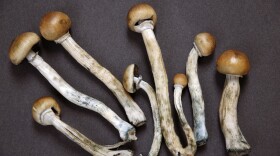Mushrooms are used as food, in medicine and for one western Massachusetts artist, they’re her medium of choice.
To make her botanical prints, Madge Evers creates prints on paper from mushroom spores.
On a recent rainy day in Haydenville, Evers foraged near the end of her driveway.
“So here’s a mushroom, and I noticed this before,” Evers said, bending down. “Can you see the little spore print?”
Evers taught English and reading for 25 years in Massachusetts and Rhode Island public schools. She may not be steeped in the science of fungi, but she knows a lot. She used to cultivate mushrooms. Now she mostly finds them in the woods.

After a wet summer, mushrooms are growing everywhere. Evers said she has to stop herself sometimes from picking them, but there always seems to be one more.
“I might grab one of those,” she said, pointing toward a mushroom in a group she described as a “fairy ring.”
“The cap is opening more. It makes sense to think about the spores inside the gills,” Ever said. “It releases them very fast, but as soon as they hit the air, they slow down.”
Evers has two art studios, including one in her garage. Standing by a worktable, she picked up a recently finished print of elegant plant silhouettes set on a large sheet of textured black paper.
The process begins in the garden. In the growing season, Evers keeps an ongoing collection of interestingly shaped leaves and flowers, like ferns and poppies.
“I put down [on the paper] pressed plants, and in this case, these are fennel plants that I collected this summer,” Evers said. “I pressed them in a book and then I placed them on the paper, and I put the mushrooms on top and I leave them there ... usually overnight.”
As the mushrooms release their spores onto the paper, the outlined impressions of the plant matter underneath appear.

For this piece Evers used orange jack-o’-lantern mushrooms — they have big spores and are fun to work with, she said.
“And then these were just little funny brown mushrooms,” she said. “I didn’t know that they were going to have those rust-colored spores.”
The entire process is really a giant experiment, she said. And sometimes the spores drop and sometimes they don’t.

“Sometimes it could be 12 hours and nothing happens!” Evers said, laughing.
Other times, little hitchhikers are in the mix.
“A very cool thing about the spore prints is that some mushrooms have little tiny worms. The eggs are in the gills. They hatch. They drop and 'swiggle' their way and make their own marks on the paper," Evers said.

The final spore print images are soft in mood and kind of haunting. Evers describes them as "potentially fugitive.” Over time, the spores could deteriorate, Evers said, so she photographs the prints once finished.
When she was in her 20s in New York City, Evers was a photographer’s assistant. As she developed into an artist, she said she could have gone in that direction.
But working with plants and in particular mushroom spores seemed to offer her something more. Evers is deeply concerned about climate change and its impact on animal and plant life. She seems to find hope in the resilient mushroom.
“Mushroom spores have been regenerating and breaking down rock and communicating with trees for millennia,” she said. “I just feel that they have a story, a message.”
Like botanists and non-botanists before her, Evers is preserving plant life on paper. Herbariums, with their large collections of preserved plant specimens, are often housed in libraries (the equivalent collection of fungi is aptly called a fungarium).
The Arnold Arboretum in Boston houses an herbarium and that’s where Evers has a show of her spore prints into early next year. She’s titled it, “A New Herbarium.”















